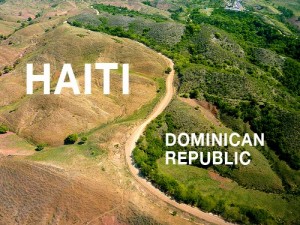“Cultural Ecology” is the anthropological study of how a group of humans adapted and how societies developed in the context of their environment; weather patterns, climate, native flora and fauna, available materials, and so on. “Environment” is divisible into three categories; abiotic, biotic, and cultural. The abiotic environment of a society includes land, water, minerals, and climate, while the biotic environment is the living things within the environment, such as plants and animals. The cultural environment focuses on the interactions of human beings and the development of societies. Cultural ecology is capable of examining both the effect of environment on a human society, and the effect of human society on its environment.
Archaeological techniques allow us to infer what life in a society is or might have been; in the context of an environment one might infer how a society affected its environment, or why a certain society adapted in a specific way. Though this is largely used to study societies, it can also allow researchers to see how an environment, itself, has changed. For example, the changes in Haitian culture and environment. We may discern that Haiti was once lush and forested, and assume that the natives adapted accordingly. However, after the colonization of Haiti by the Europeans, the forests were razed to clear land for sugar plantations, and slaves from many African nations were brought to work the fields. Today, Haitian culture is comprised of the various cultural traditions brought by slaves from many different nations. As for the environment of Haiti, Haiti now has only 2% forest cover, and has lost virtually all of its topsoil, making it impossible to grow food, and causing widespread drought. As such, a staple of Haitian culture has become its dependence on imports for 93% of its food, and Haiti’s resultant poverty.
The changes of environment as a result of human interaction is the distinguishing attribute of the Anthropocene Era, a geological era in which humans have become so great a geological force as to cause changes in the natural environment on a global scale. Cultural ecology, in its study of human environments, gives us insight into what environments may have been like in the past, as in the case of the once-verdant Haiti. This enables members of many disciplines, archaeological and ecological, to study how an environment has changed, and determine how human action may have led to such changes. It also allows us insight into a society’s reaction to the changing environment—did they flee, adapt, or die out? Did they recognize the change as the result of human activity? Did they attempt to fix the changes? Cultural ecology can be used to study both the changes in an environment, and the societal reactions, allowing archaeologists and ecologists alike to study the development of the Anthropocene as a human-powered geologic era.
More Reading:
http://www.oregon-archaeology.com/theory/cultural_ecology/
http://www.britannica.com/science/Anthropocene-Epoch
Sources:
Cambata, Altaire. “The Global Impact of Climate Change .” Ecology, n.d. Web. <http://www.ecology.com/2012/01/12/global-impact-climate-change/>.
Standish, Alex. “The Anthropocene: A Man-made Epoch.” Spiked. http://www.spiked-online.com/newsite/article/the-anthropocene-a-manmade-epoch/16893#.VfX71hHBzGc.
Haiti Friends. http://www.haitifriends.org/history/.
Gunn, Michael C. “Cultural Ecology: A Brief Overview.” University of Nebraska- Lincoln. http://digitalcommons.unl.edu/cgi/viewcontent.cgi?article=1148&context=nebanthro.


